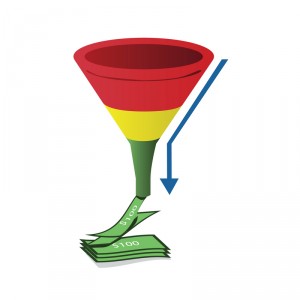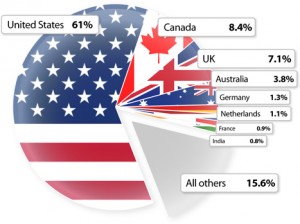How Lead Scoring Can Optimize the Marketing Funnel
 Learn how lead scoring can optimize the marketing funnel. Every aspect of lead scoring has the ability to optimize the marketing funnel’s potential for converting leads into customers. Lead scoring is a proven method for assigning value to leads based on their demographic profile and their engagement behavior. Lead scoring helps the marketing team determine which leads need further nurturing and which are ready for the sales department.
Learn how lead scoring can optimize the marketing funnel. Every aspect of lead scoring has the ability to optimize the marketing funnel’s potential for converting leads into customers. Lead scoring is a proven method for assigning value to leads based on their demographic profile and their engagement behavior. Lead scoring helps the marketing team determine which leads need further nurturing and which are ready for the sales department.
The marketing funnel traditionally refers to the journey the marketing department creates for potential leads to guide them in a specific direction. In marketing automation, the marketing funnel is a conceptual system of obtaining customers through initial contact and offerings and then retaining them with value added offers or content, known as lead nurturing. The goal of the marketing funnel and lead nurturing is to retain lifelong customers.
Leads progress through different stages in their buying process. Lead scoring ranks these leads to determine their likelihood of purchasing and when they may be ready to commit. This scoring process is essential to the market funnel. Marketers need a method of understanding their leads, so they could be more effective at guiding them in the right direction. Lead scoring is that method.
The following are just a few of the ways lead scoring optimizes the marketing funnel:
1. Understanding Lead Quality
Every business has different criteria they use to determine the quality of a lead. In all cases, it should reflect a combination of traits and actions that indicate a lead is both a good fit for your company and interested in your product or service. Lead scoring qualifies and quantifies the leads that are in the marketing funnel to determine their potential.
2. Identifies Leads that are Ready to Buy
The criteria created for lead scoring will have indicators that clearly demonstrate if a lead is ready for the sales department. For example, registering and downloading several articles over a short period of time will boost a lead’s score, since it is a good sign that they are sincerely interested. The higher a lead ranks, the more likely they are ready to exit the marketing funnel and become a customer.
3. Identifies Leads that will never buy
Lead score also captures demographic characteristics (budget, purchasing authority, company history etc.) that could provide ample evidence that a lead will never convert. For example, a competitor could be snooping on your site to compare prices or a student could be using your website for research. The marketing department can eliminate the time spent nurturing leads that have no reason to be in the marketing funnel.
4. Indicators Leads that Need more Nurturing
Not every lead that is visiting your website is ready to exit the marketing funnel. Lead scoring identifies these indicators and provides marketing with valuable information on how they can personalize their nurturing to these undecided leads in an effort to persuade them to convert.
In today’s competitive marketplace, businesses need to do everything in their power to optimize their marketing funnel. Lead scoring will qualify leads, determine which ones are ready to buy and which ones will never buy, as well as which leads need more personalized information before they are ready to decide. This insight into a lead’s buying process is vital to improving efficiency and productivity of your marketing funnel.










